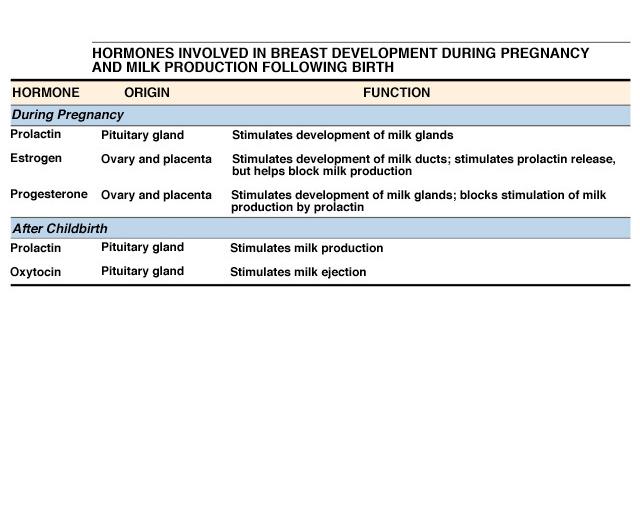Hormonal_regulation
[E2] [E3] [E4] [E5] [E6] [F3] [F4] [I2] [I3] [D2] [D3]
The
production of milk by the mammary gland
follows different phases:
a.
the
mammary gland, developing from puberty under the stimulation of the
ovarian
oestrogen hormone, increases during pregnancy because of the large
quantity of
oestrogen hormone and progesterone produced by the placenta;
b.
the
first liquid produced by the breast, colostrum, is a thick and
yellowish liquid
which contains protein and lactose but no fat. It is produced from the
fifth
month of pregnancy, not in a regular way, and constitutes only a
hundredth of
the quantity of milk which will be produced two or three days after the
birth
of the baby;
c.
after
the delivery, thanks to the presence of the prolactin, following the
drop in
the oestrogen hormone and progesterone in the placenta, the secretion
of
colostrum becomes regular because it must feed the baby with the right
milk;
d.
the
prolactin stimulates the synthesis of a large quantity of fats, lactose
and
casein from the mammary glands, and the breast begins to secrete a
large
quantity of milk rather than colostrum. The phase of transition between
colostrum and mature milk is called “phase of lactogenesis”. Through a
complicated process, the human mammary gland turns glucose into
lactose,
secretes fats and keeps many proteins with other components, in
particular
sodium and chlorine.
The
composition of human milk is very different
from the
composition of the mother’s blood:
-
10
times more lactose than glucose present in blood
-
7
times more fats
-
3
times more calcium
-
2.5
times more potassium
-
1/7
of the quantity of protein
-
1/15
of sodium
